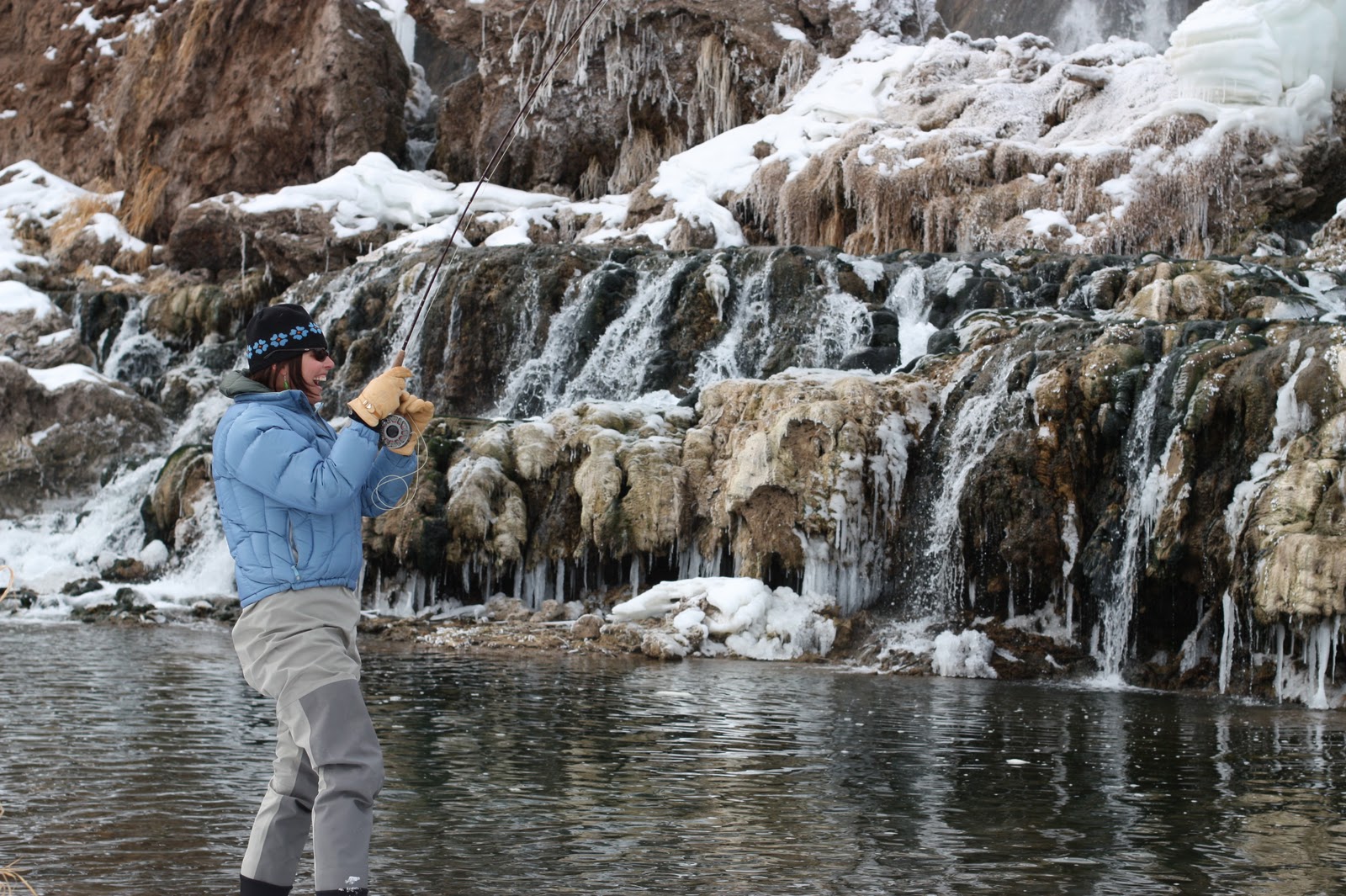Anglers may be overlooking one of Idaho’s abundant and fun-to-catch stream fish – mountain whitefish – and late fall and winter are some of the best times to catch them.
Before talking about catching whitefish, let’s clear up a few misconceptions. Whitefish are not a so-called “trash fish,” they’re a native Idaho gamefish found in many rivers and streams, as well as some lakes. Some anglers might mistake them for suckers because of their slightly down-turned mouths, but whitefish are in the Salmonid family along with salmon, trout, char and grayling.

Whitefish are plentiful in many rivers and streams throughout the state. According to Fish and Game’s stream surveys, it’s common for whitefish populations to outnumber trout by five to 10 times where the two coexist.
“Our past harvest records show catching whitefish was once a very popular activity in Idaho, but for some reason, interest has waned,” said Joe Kozfkay, Fish and Game’s State Fisheries Manager. “I can assure you it’s not for a lack of fish, and anglers should reconsider whitefish and take advantage of this good fishing opportunity for a very plentiful species.”
Because whitefish are so abundant, Fish and Game offers a generous bag limit, typically 25 per day, but check rules for the body of water you’re fishing to be sure.
Anglers should also be interested in whitefish because they will readily take a well-presented bait, fly or lure, they’re similar in size to an average trout, they’re scrappy when hooked, and they’re a tasty, yet admittedly, a little bony. They are particularly well suited to smoked and pickled preparations, similar to the famous whitefish of the Great Lakes.

Know your quarry
Whitefish spawn in the fall, typically in November, and school up during the spawning period, so where you catch one, you stand a decent chance of catching more.
While some anglers may question targeting whitefish while they’re spawning, angling pressure is unlikely to affect whitefish populations. One reason for the large population is each female produces many eggs. In one instance, a female sampled from the Big Wood River had 40,000 eggs. By comparison, trout average between 2,000 to 3,000 eggs with a large fish having 4,000 to 5,000.
Young whitefish grow rapidly through their first three-to-four years, typically reaching 10 to 12 inches, and after reaching maturity, whitefish usually spawn every fall for the rest of their lives.
Whitefish can be long-lived, but slow growing as they age. A four-year-old whitefish might be 12-inches long, while a 15-inch fish could be 8 to 10-years old. One 16-inch fish sampled from the South Fork of the Snake River was 19 years old.
How to catch them
Anglers don’t need special tackle to target whitefish. If you’re a trout angler, you probably already have what you need. Whitefish will readily take a single salmon egg, a chunk of worm, or other bait, such as maggots. They will also take artificial flies, including dry flies.
Anglers should remember whitefish have a relatively small mouth compared to trout, so smaller hooks, flies and pieces of bait work best. Same goes for lures, use smaller tackle.
Whitefish are frequently found in pools and deeper runs below riffles. They tend to congregate near the bottom, which is the most likely place to catch them. They will also eat insects off the surface, but most of their feeding is below the surface.
Fly anglers should try drifting weighted caddis, midge and stonefly nymphs through slow-to-moderate current, and they may want to add split shot or similar weights to quickly sink the flies near the bottom. Tandem flies with a larger, heavier fly trailed by a smaller fly is a good combination that will often attract hungry trout as well as whitefish.
For conventional tackle, try bouncing a maggot or salmon egg along the bottom using a few split shot, or small pencil lead. Using a float to suspend your bait near the bottom and allowing it to drift with the current is another good option.
Whitefish don’t limit trout
With the high abundance of whitefish, some anglers might think they are outcompeting trout, but research has shown that’s not the typically the case.
Fish managers have learned from research that the number of trout in Idaho rivers can be managed by adjusting the bag limits and/or increasing minimum size limits. In the long term, they found the limiting factor for trout populations in good habitat is often angling harvest, not competition from whitefish.
Catching whitefish is a great option for stream fishing during the colder months of the year. Grab your favorite trout rod, dress warm, and plan to bring home some whitefish for the smoker or frying pan.









